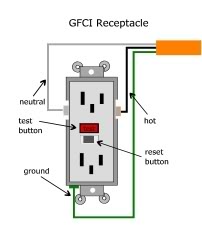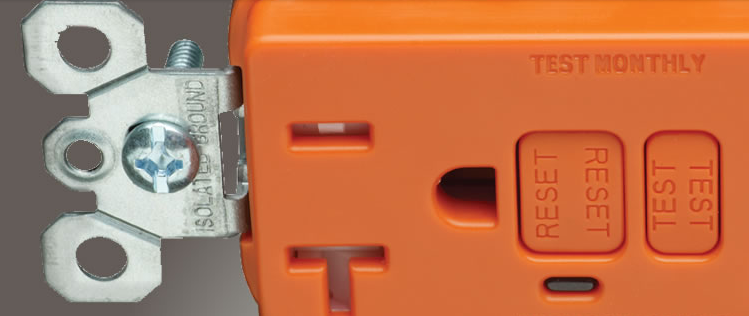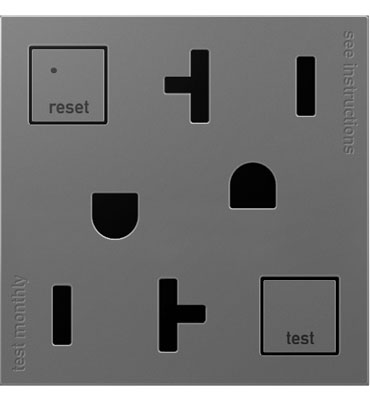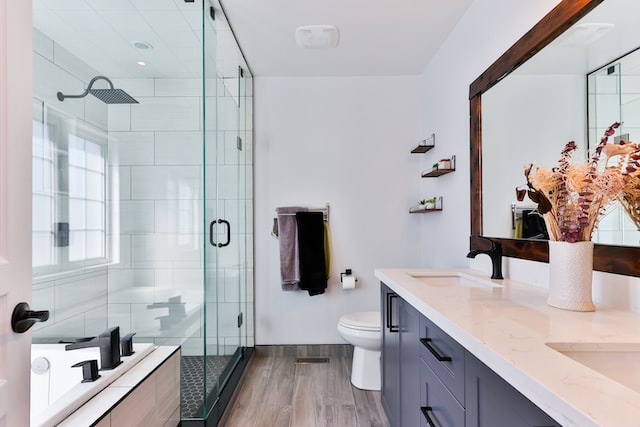A GFCI outlet is a ground-fault circuit interrupter outlet that you typically see in kitchens and bathrooms. You can easily spot a GFCI outlet by the extra push-buttons (usually labeled “reset” and “test” on the face). In the United States, this type of outlet is required by the National Electrical Code (NEC) to be installed whenever the outlet is located near water, which is why you’ll most likely find these outlets in the kitchen, bathroom, laundry room and outside. Interestingly, the NEC was first established in 1897, and this organization’s standards and practices are approved by the American National Standards Institute and are part of the National Fire Codes.

How to test a GFCI outlet
According to the Electrical Safety Foundation International, to successfully test your GFCIs each month follow these steps:
- Push the “reset” button on the GFCI to prepare the outlet for testing.
- Plug an ordinary nightlight into the GFCI and turn it ON. The light should now be on.
- Push the “test” button of the GFCI. The nightlight should turn OFF.
- Push the “reset” button again. The nightlight should now go ON again.
If the nightlight does not turn off when the “test” button is pushed, then the GFCI is not properly protecting you from shock or electrocution. It may have been improperly wired or damaged. Contact a licensed electrician to check the GFCI and correct the problem.
How a GFCI outlet works
In the United States, a GFCI outlet has three holes or slots, two on top and one underneath. The top left slot (called “neutral”) is longer than the top right slot (called “hot”). The bottom slot is the “ground” position. These outlets are more sensitive than regular outlets and are designed to trip more easily, which can help prevent electrocution and shock. In a normal situation, electricity flows from hot to neutral. Any imbalance in this flow of electricity and the GFCI will trip the circuit, stopping the flow of electricity to the outlet.

Why your home needs a GFCI outlet
GFCI devices are approved for protection against electric shock trip at 5 milliamps within 25 milliseconds – fast enough to prevent a human from being electrocuted. If you were operating a hand mixer and standing near a sink full of water, and you accidentally lose grip on the mixer and it falls into the sink while you are still in physical contact with the mixer, a GFCI will help save your life. The GFCI will recognize an imbalance in the electrical flow and immediately stop that electrical current. Older homes may not have a GFCI in bathrooms and kitchens. In the U.S., successive editions of the National Electrical Code required GFCIs for additional areas: underwater swimming pool lights (1968); construction sites (1974); bathrooms and outdoor areas (1975); garages (1978); near hot tubs or spas (1981); hotel bathrooms (1984); kitchen counter receptacles (1987); crawl spaces and unfinished basements (1990); wet bar sinks (1993); and laundry sinks (2005)*. If you live in a vintage home without GFCI’s, consider hiring a licensed electrician to upgrade your outlets.
GFCI style and design
There are many styles and designs for GFCI’s in the market and homeowners are no longer stuck with the red and black buttons that stand out so awkwardly in a room. Designs in which the “test” and “reset” buttons are the same color as the outlet can be found at your local hardware supply store or you can order a multitude of color options online. You can also head to a specialty electrical supply store and order more custom-looking styles like the one you see above. They are generally considered an inexpensive upgrade to the home, many GFCI’s cost around $15 – $30. Be sure to purchase a self-testing GFCI so that you can perform a monthly test.
Installing a GFCI
It is always recommended to hire a professionally licensed electrician to install or replace your GFCI outlets. Properly connecting and testing the outlet, and testing the circuit breaker, should be left to the professional. Use Porch to find your next electrician.
*“GFCIs Fact Sheet”. US Consumer Product Safety Commission.
Top image credit: Legrand





